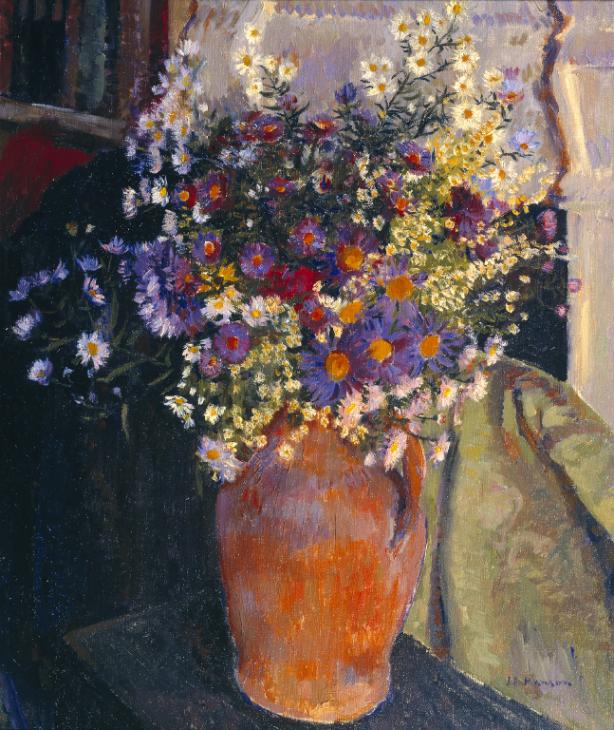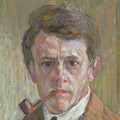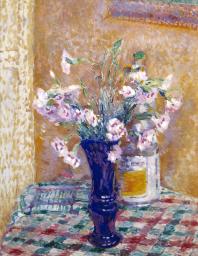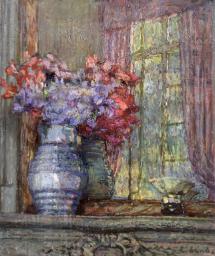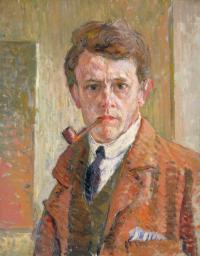Michaelmas Daisies is painted in artists’ oil paints on a pre-primed and stretched canvas, supplied by the London artists’ colourmen Newman of Soho Square. The canvas is linen and has an uneven, plain weave and has been sized and prepared with white, probably oil-based priming. The support retains its original stretching with coated-steel tacks onto a four-member pine stretcher with mortise and tenon expansion joints.
Manson initially drew in the main compositional elements in thinned blue paint, which is visible at the edges of the earthenware vase. This type of underdrawing is also found in other works (see Tate
N04929). The background and table are summarily laid in with fairly liquid colours, leaving areas of the priming exposed. The main body of flowers is painted directly on to the priming whereas peripheral blooms are laid over the dark background. The painting of the flowers is executed with great attention to detail, with small impasto brushstrokes producing a complex pattern of interwoven colours. The vibrancy of the colouring is enhanced by the lively wet-in-wet application and contrasting use of the canvas texture in deft scumbled touches. The colours are predominantly opaque mixtures but use is made of a dark Prussian blue and alizarin crimson-coloured glazes. The surface has been coated with a thin even layer of soft resin varnish to saturate the colours and enhance the contrast between the dark background and the bright colours of the flowers.
Roy Perry and Sarah Morgan
October 2005
How to cite
Roy Perry and Sarah Morgan, 'Technique and Condition', October 2005, in Robert Upstone, ‘Michaelmas Daisies c.1923 by James Bolivar Manson’, catalogue entry, July 2009, in Helena Bonett, Ysanne Holt, Jennifer Mundy (eds.), The Camden Town Group in Context, Tate Research Publication, May 2012, https://www.tate.org.uk/art/research-publications/camden-town-group/james-bolivar-manson-michaelmas-daisies-r1139843, accessed 30 October 2025.

